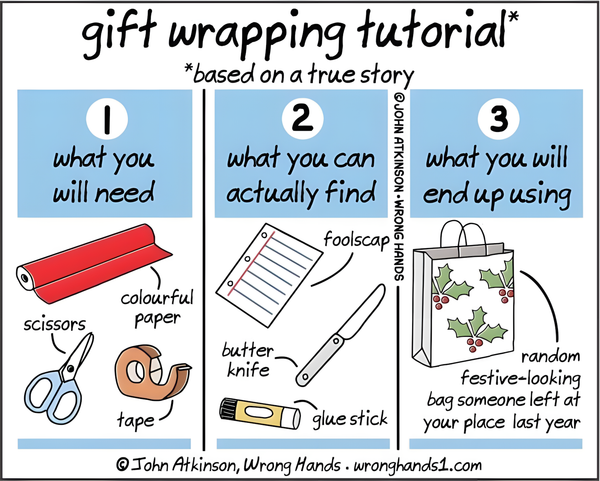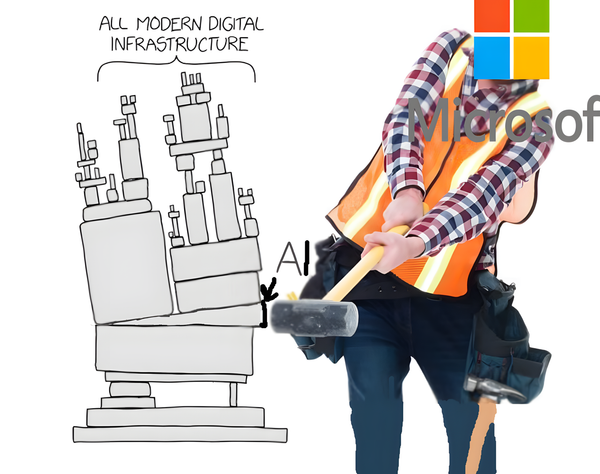The Managers' Guide #97

Little people try to control everything. Thus, they control nothing. Wise people focus on one thing, the most important, and let go of the rest. - Maxime Lagacé
Goal-O-Rama
- 🎯 Product teams often fall into “goal-o-rama” — setting too many goals that become overwhelming and counterproductive, particularly when they cascade KPIs and OKRs down through the organization.
- 🧠 The author argues for fewer, more focused goals: “An org with a natural capacity for 5–7 goals ends up with 25–30 goals, and everyone pays the price.”
- 🔄 Goal proliferation happens through several mechanisms — leader pet projects, defensive goal-setting, proxy metrics replacing outcomes, and the tendency to “keep adding but never removing.”
- ⚠️ Warning signs include teams unable to explain their goals from memory, goals that don't connect to higher-level objectives, and discussions about “hitting the number” rather than creating value.
- 🧩 Potential solutions include limiting goals to 1-2 per team, focusing on “minimum viable measurement,” and encouraging teams to push back against goal inflation.
- 💬 The author suggests a powerful reframing: “We don't do work to hit goals. We set goals to focus our work.”
Fast-forwarding decision making
- ⏩ “Fast-forwarding” is a decision-making technique that helps teams break through analysis paralysis — it involves mentally jumping ahead to envision the decision already made and working backward.
- 🧪 This approach works through “outcome testing” — asking “If we choose Option A, what would success look like? What would failure look like?” which helps expose hidden assumptions and concerns.
- 🔮 The technique flips traditional pros/cons analysis by starting with the imagined future state, making it easier to identify potential obstacles and realistic outcomes.
- 🗣️ Facilitation tip: When teams get stuck, ask “If we had to make this decision right now, what would we choose?” — forcing clarity about what truly matters.
- 🧠 The psychological benefit comes from bypassing overthinking — “You're essentially tricking your brain into making the decision before your analytical mind can get in the way.”
- ⚖️ Fast-forwarding works best for decisions with reasonable risk and incomplete information — not for high-consequence choices requiring deep analysis.
- 🚀 Implementation includes three key steps: imagine the decision is already made, test multiple outcomes, and document concerns revealed through the process.
Staff Engineer vs Engineering Manager
- 👥 The article contrasts Staff Engineer and Engineering Manager roles — both leadership positions but with fundamentally different focuses and responsibilities.
- 🛠️ Staff Engineers primarily provide technical leadership — they “solve complex technical problems, mentor others on technical topics, and make critical architectural decisions.”
- 📊 Engineering Managers focus on people management — they “develop individuals, build effective teams, and align work with business objectives.”
- 🔄 Career switching between these paths is possible and increasingly common — the author notes that “the industry is moving away from the idea that management is the only path to advancement.”
- 💰 Compensation is comparable for both roles at equivalent levels — contradicting the outdated notion that management is the only route to higher pay.
- 🧩 Success in either role requires complementary skills — Staff Engineers need communication abilities while Engineering Managers need technical understanding.
- 🌱 Each role has different growth trajectories — Managers advance by leading larger teams, while Staff Engineers progress through expanding technical scope and influence.
- 🤝 The most effective engineering organizations foster strong partnerships between these roles — “they're complementary forces that, when working well together, create highly functional engineering teams.”
How to write your own job description (and invent your role)
- ✍️ The article suggests proactively writing your own job description — rather than waiting for one to be handed to you, which helps you shape your role and take ownership of your career trajectory.
- 🎯 This approach works by identifying and articulating your “unique zone of genius” — the intersection of what you're exceptionally good at, what you enjoy, and what creates value.
- 📝 The process involves creating a “Roles & Responsibilities” document that clarifies: your core function, key responsibilities, performance metrics, and authority boundaries.
- 💪 Writing your own job description increases leverage with management — “When you show up with clarity about how you can create maximum value, good leaders will support you.”
- 🔍 The author recommends a self-assessment exercise: “Where am I spending my time? What am I great at? What energizes me? What creates disproportionate value?”
- 🚀 This practice becomes particularly valuable during transitions — new roles, new managers, or when you feel your work isn't aligned with your strengths.
- 🧠 The underlying mindset shift is taking ownership of your career — “Nobody cares about your career as much as you do, so don't outsource this responsibility.”
- 🗣️ The approach requires courage — “Having these conversations can feel uncomfortable, but the alternative is spending years in a misaligned role.”
An introduction to thinking about risk
- ⚠️ The article introduces risk management in software engineering — framing it as essential but often overlooked: “Most software engineers don't think about risk management in any formal way.”
- 🧩 Risk is defined through its components — likelihood of occurrence and potential impact, with the author arguing for treating risk as “likelihood × impact.”
- 📊 Risk assessment involves identifying, analyzing, and prioritizing risks — with examples like “our database might run out of disk space” or “a key team member might quit.”
- 🔄 Four fundamental risk responses are outlined — accept (do nothing), mitigate (reduce likelihood or impact), transfer (shift responsibility), or avoid (eliminate the risk entirely).
- 🛡️ The author emphasizes that risk management isn't about eliminating all risks — “The goal isn't to eliminate risk; it's to understand risks and make informed decisions about them.”
- 💼 The business perspective is highlighted — good risk management protects both technical systems and business interests, especially when considering cost-benefit tradeoffs.
- 📈 The article positions risk management as a career differentiator — “Engineers who understand and can communicate about risk are more effective and more promotable.”
Compliance Is Not Commitment
- 💔 The article distinguishes between compliance and commitment — “Compliance is what people do when they have to; commitment is what they do when they want to.”
- 👥 A key insight is that leaders often misread compliance as commitment — team members may follow instructions without genuine buy-in, creating an illusion of alignment.
- 🔍 The compliance trap manifests in several ways — silent meetings, lack of pushback, and superficial agreement that masks underlying resistance.
- 🌱 True commitment emerges from autonomy and ownership — “People commit to what they help create” rather than what's imposed upon them.
- 🗣️ The author suggests specific practices to foster commitment — including inviting genuine input, creating psychological safety, and explaining "the why” behind decisions.
- ⚖️ There's a balancing act acknowledged — some compliance is necessary in organizations, but over-reliance on it undermines innovation and engagement.
- 🚩 Warning signs of a compliance culture include minimal volunteering, lack of initiative, and teams waiting for explicit permission before acting.
- 🔄 The shift from compliance to commitment requires leaders to surrender some control — “The paradox is that by giving up control, you often gain more influence.”
That’s all for this week’s edition
I hope you liked it, and you’ve learned something — if you did, don’t forget to give a thumbs-up, add your thoughts as comments, and share this issue with your friends and network.
See you all next week 👋



